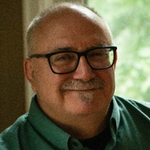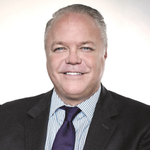- Session I • Opening Session-Regulatory Agency Perspective
Hue Kwon - Regulatory Trends in Aseptic Processing
Brooke Higgins - FDA Perspective on Pre-Approval Inspections, Common Findings and Factors Leading to Success
Bernard MarasaDr. Marasa's presentation will cover a high-profile summary of the most common observations (Inspection Findings) related to sterility assurance seen by Facility Inspectors as summarized in forms 483 and discussed with Facility Management during Pre-Approval Inspections or For-Cause Inspections.
- Q&A Session
Bernard Marasa•Hue Kwon•Brooke Higgins - Coffee Break at the Exhibition Hall
- Session II • Annex 1 and CCS Implementation
Seung Hwan Oh - Improvements and Implementation of a Continuous Environmental Monitoring Program
Marc GlogovskyAs of August 25th of this year (effective date of EU/PICS Annex 1), there is a regulatory requirement to provide continuous viable monitoring not only in the Grade A environment, but the surrounding Grade B areas as well. In the realm of microbiology, Environmental Monitoring often requires multiple days to more than week to collate and evaluate data to determine contamination counts and identifications of recovered microorganisms. This presentation will offer potential methodologies to improve the time-to-detection of viable contamination results as well as moving towards real-time analysis of the environment.
- Application of Machine Learning Algorithms for the Monitoring and Control of Cell Culture Processes
Mohammad RashediThe optimization of biopharmaceutical processes necessitates the creation of a scalable and efficient control scheme to align with process constraints and objectives. This presentation introduces the application of a Model Predictive Controller (MPC) to determine an ideal feeding strategy that results in optimal cell growth, disturbance rejection, and metabolite production within fed-batch bioprocesses. We explore the utilization of machine learning algorithms within the forecasting model to enhance our development process. Leveraging the bioprocess model, the controller maximizes protein production on a day-to-day basis for each batch while ensuring that other metabolites remain within a feasible range.
- Case Study Analysis on Aseptic Process Control Considering EU GMP Annex 1
Hyun Cheol (Charles) KimThe presentation will focus on Hanmi’s experience in operating an Aseptic Manufacturing Process for prefilled syringe production within Fill and Finish products. It will also discuss control strategies used for aseptic process in prefilled syringe production from an industry perspective. The presentation will feature case presentations on how the company improved its existing operating system in response to the revised regulations of the EU Annex 1. The hardware required to build a Contamination Control System and the direction of improving the operating system will also be discussed. In addition, case studies on investigation and CAPA activities against deviations experienced during RABS operations for aseptic process control will be presented.
- Implementation of PUPSIT to Comply with Annex 1
Wayne Lee - Panel Discussion and Q&A
Marc Glogovsky•Hyun Cheol (Charles) Kim•Wayne Lee•Seung Hwan Oh•Mohammad Rashedi
Marc Glogovsky
Business Unit Manager - Microbiology Consulting at Valsource Inc
Hyun Cheol (Charles) Kim
Vice President and Head of Plant, Pyeongtaek Bio Plant at Hanmi Pharm. Co., Ltd.
Wayne Lee
Fast Trak™ Validation Services Leader, Global at Cytiva
Seung Hwan Oh
Site Quality Head, Quality at Janssen
Mohammad Rashedi
Data Scientist at Amgen
- Product Demo by Datwyler: Improve Your Production Efficiency by Coating Technology of Datwyler
Sea Joung ParkRubber components are often an essential part of the primary packaging system of parenteral drugs. This presentations aims to highlight the unique features and benefits of Datwyler’s coating technology on rubber components, and address how this can help pharmaceutical companies to improve their production efficiency.
- Lunch Break
- Session III • Aseptic Processing • Techniques, Technologies & Updates
Max Fernandez - PDA’s Proposed ANSI Standard QRM (Tool) for Aseptic Processing:An Overview of What Is in the Works
Amanda Bishop-McFarland•Noel Long•Ivy Louis•Christine RobertsThis proposal was devised from the work of PDA Technical Report 44, Quality Risk Management for Aseptic, and was put forward by one of the original Technical Report members, Mr. Harold Baseman, ValSource LLC.
The proposed standard draft document is intended to provide a lifecycle approach using a holistic evaluation of contamination control systems designed to prevent contamination during aseptic processing and ultimately ensure the safety of the products when delivered to the patient. The proposed standard is applicable to aseptic processes used to manufacture sterile, microbiologically controlled, and low bioburden regulated health care products. It is applicable to pharmaceutical, biological, and ATMP (Advanced Therapeutic Medicinal Products). This proposed standard does not supersede or replace national regulatory requirements, such as Current Good Manufacturing Practices (CGMPs) and/or compendial requirements that pertain to a particular national or regional jurisdiction.
During the 20 minutes discussion, the team will discuss on the background of what the proposed standard is intended to serve besides the benefits of adopting this to identify quality risks for Aseptic processing and management of those risks, proactively. - Airflow Visualization; Smoke Studies
Morgan PolenAirflow Visualization Studies also known as Smoke Studies allow for the visual characterization of a cleanroom/clean zone’s “Contamination Control Effect”. As air is transparent, it is difficult to determine this contamination control effect and unfavorable or adverse air patterns often go undetected. Because of this, International GMP regulations require Airflow Visualization testing as part of cleanroom qualification. The updated GMP Annex 1 (2022) expands upon these requirements for the documentation of airflow patterns and the use of these studies for risk analysis purposes, environmental monitoring site selection, and for operator training.
Topics Covered in the Session:
• Why do qualified facilities have contamination problems?
• Reasons behind smoke study related 483 observations.
o Smoke quality
o Smoke density
o Smoke dissipation rate
o Camera angles
o Incomplete or partial study
o Inconclusive reports
o Video quality
o Unavailability of video documentation
• Smoke study technology
• Tracer particles and importance of neutral buoyancy
• Tracer particle ejection methodology and velocity
• In-situ air pattern analysis
• Post smoke study cleaning: “there is nothing clean about SMOKE study” - Janssen Vaccine: A Case Study on Visual Inspection Improvement based on FDA’s Draft Guidance
MinYoung KwonThe release of FDA draft guideline 'Inspection of Injectable Products for Visible Particulates' led to a heightened focus within pharmaceutical industry. This guideline clearly delineates the expectations that industry must achieve a profound understanding of the sources of particulates, utilize appropriate analytical methods for rigorous monitoring, and deploy effective strategies to ensure that the final product is essentially free of visible particulates.
Leveraging Janssen's experience in FDA inspection approvals, this presentation aims to share Janssen's approach to meet industrial standard. This involves the initiation of a comprehensive risk assessment to scrutinize the sources of particles, distinguishing between intrinsic and extrinsic particles. Additionally, highlighting the significance of adopting a life cycle management approach, enabling the industry to proactively identify and mitigate risks associated with visible particulates, thereby ensuring product quality and safety throughout the product's life span. - Panel Discussion and Q&A
Amanda Bishop-McFarland•Max Fernandez•Noel Long•Ivy Louis•Morgan Polen•Christine Roberts•MinYoung Kwon
Amanda Bishop-McFarland
Senior QRM and Microbiology Consultant at ValSource
Max Fernandez
Vice President at Intellective Bio
Noel Long
Senior Sterility Assurance Adviser at Cytiva
Ivy Louis
Founder of VIENNI® TRAINING & CONSULTING LLP
Morgan Polen
Contamination Control Expert at Microrite
Christine Roberts
Senior Standards Manager at Parenteral Drug Association
MinYoung Kwon
Engineer, Manufacturing Science and Technology (MSAT) at Janssen Vaccines
- Coffee Break at the Exhibition Hall
- Session IV • Cell & Gene Therapy
Deok Seok Oh - Korea's ATMP Regulation’s Requirements, Scope, and Characteristics: How Are They Different from the EU and US?
Heonho JungGene and cell therapy medicinal products are different from traditional medicinal products in terms of their novelty, complexity, and technical specificity. Therefore, EU/US/Korea has new regulations for gene and cell therapy medicinal products; REGULATION (EC) No 1394/2007 21 CFR Subchapter F Biologics, 21 CFR part 1271—HUMAN CELLS, TISSUES, AND CELLULAR AND TISSUE-BASED PRODUCTS, and Advanced regenerative medical treatment and Advanced Biopharmaceutical Safety and Support Act. Korea ATMP regulation has different Requirements, Scope, and Characteristics distinguished from EU and US. Uniquely, Korea ATMP requires a special license of the company which manufactures Human Cells as a drug substance of ATMP.
- Evolution of Aseptic-Containment in Biological and ATMP product filling
Hussein BachirFor products that are biologically hazardous, toxic or genetically modified organisms (Viral vectors) there is a requirement to combine Aseptic processing and Containment measures to balance risks for patients and operators. For Filling operations Isolator barrier technology has evolved to combine containment measures in different combinations depending on level of containment required based of Health Based Exposure limits HBELs at OEB 1-6 levels. The Aseptic-Containment Pyramid, original pyramid was developed for API (powder particle) OELs, has now been re-characterised with the central focus on HBELs and GMP compliance with Aseptic process filling maintaining Positive pressure control in a Grade C/ ISO8 surround (patient safety) with containment measures added as required (operator safety).
Although Biological Safety Levels (BSL) are typically specified BSL requirements are not fully aligned with GMP, Aseptic processing and Patient safety hence the need for a new generation of containment measures and levels. This presentation will define the new paradigm of Aseptic-Containment and developed control measures applied for Filling Isolators in different combinations of containment measures that together build to meet the highest containment level OEB 5-6. Additionally a key strategy to prevent operator exposure at batch end (opening the barrier) and cross contamination of next batches/ products is the application of Post production decontamination of the complete Barrier system and equipment within the Containment boundary. Two decontamination methodologies apply; for toxic product Clean-in-place systems are integrated into the barrier and for biological product residues that can be inactivated via hydrogen peroxide vapour a Post production VHP cycle is applied. As biological products are impacted by sporicidal agent (VHP) residuals the pre-production cycle (to establish Grade A) varies from the Post cycle Decontamination cycle – learn about these key considerations and associated laboratory studies that support VHP cycle end point qualification. - Optimization of Aseptic Manufacturing Risk Mitigation Strategies for ATMPs
Richard DenkAseptic Processing and ATMPs how does this match. Looking into the latest published guidelines like the PIC/s Annex 2 A for ATMPs, Microbiological or Particular Contamination should be avoided even the cells received from the patient might be already contaminated. How to prevent additional Contamination? Currently the manufacturing takes often place within BSC “Bio Safety Cabinets” working with open products and manual operations which pose the highest risk to the product and patient. Closed technologies like singe use system, Barrier or higher automation does reduce this risk and will be explained with their important to consider implementing strategies.
- Panel Discussion and Q&A
Hussein Bachir•Richard Denk•Heonho Jung•Deok Seok Oh
- Session V • Human Error Reduction and Quality Improvement in Aseptic Environment, Part I
Hue Kwon - MFDS inspection lessons learned or trend/example
Yeonhae Han - Quality Management Maturity Guidelines
Michael CutterMaking quality improvements in aseptic operations requires a way of thinking that leads to efficient and highly reliable supplies of products. This presentation looks firstly at the ‘Why’ adopting a higher level of maturity benefits all stakeholders and then covers the ‘How’ to make the change. Finally, the presentation will show ‘What’ a Quality Management Maturity Model looks like in practice. As the US FDA prepares to publish its current thinking of QMM, there are equally important drivers to embarking on growing your maturity model.
- Panel Discussion and Q&A
Yeonhae Han•Hue Kwon•Michael Cutter - Coffee Break at the Exhibition Hall
- Session VI: Human Error Reduction and Quality Improvement, Part II
Javier Camposano - Competencies for Sterility Assurance Professionals
Arthur DumbaAs the healthcare manufacturing sector looks into the near future, leaders are concerned that there will be a shortage of technical experts in the area of sterility assurance. Sterility assurance, in its broad sense, includes a number of sterility modalities – aseptic processing, irradiation, steam, and gas. Without an adequate number of people with varying degrees of technical knowledge, skill and expertise, it is the patients who will be most acutely affected.
To help remedy this lack of skilled professionals, the Society for Sterility Assurance Processionals was formed to identify knowledge, skills, and experiences that individuals, manufacturers, regulators, and educational delivery organizations can use to help ensure there is an adequate number of people in these critical roles.
This presentation provides the background for SfSAP and its efforts to help develop the next generation of sterility assurance professionals. - A Pathway for Competency Development for Sterilization as a Subject
James VesperWhat does it mean to be competent at a task? Or proficient? And how does that differ from being an expert? The SfSAP Training and Learning Effectiveness Workstream needed to answer these questions in order to give structure to the knowledge, skills, and experiences an individual should have as they work to achieve their professional / technical goals.
This presentation examines how workstreams, such as aseptic manufacturing and microbiology have defined the progression from novice to competent to proficient to expert. The results of this work can be used by individuals as well as manufacturers who provide internal training opportunities, and educational delivery organizations such as the PDA (for pharma) and AMII (for medical devices). Examples from the SfSAP website which are available to all, will be shown. - Human Factor Control Strategy for Aseptic Manufacturing: SB & Virtuosi
Jinwoo Kim•Bobby Crawford - Panel Discussion and Q&A
Arthur Dumba•James Vesper•Bobby Crawford•Jinwoo Kim•Javier Camposano
Arthur Dumba
Director and General Manager of The Society for Sterility Assurance Professionals (SfSAP)
James Vesper
Director of ValSource
Bobby Crawford
Director, Business Development of Quality Executive Partners
Jinwoo Kim
Compliance Manager at Samsung Bioepis
Javier Camposano
Chief Operating Officer at Lifera
- Technology Demo by SHL Medical: Modularization of Assembly and Testing Equipment Platforms for Medical Device Packaging
Lyndon WildMuch like modular autoinjector platforms, modular assembly, testing, and final assembly equipment platforms leverage the competitiveness associated with traditional platforms –speed, scale, and comparatively lower costs – while offering additional flexibility to accommodate a range of designs and development models. Featuring a standardized equipment base, the modular approach results in machine bases that can be adjusted to process a mix of different products, or several versions of the same product, at speed, on a flexible scale, and with consistent quality. This Tech Talk will address the technology and benefits of the modular platform strategy and also provide a guide to the most suitable assembly, testing, and final assembly solutions for different medical device projects.
- Lunch Break
- Session VII: Drug, Device and Packaging, Part I
Gabriele PeronThe rising demand for prefilled syringes is attributed to the growing prevalence of chronic diseases, technological advancements, rising adoption of self-injection and supporting government regulations. In this session, we will walk you through the latest updates on TR-43-2 and focus on how speed to market has become a differentiating factor for success in the pharma industry. To quickly bring new drug delivery devices to market, pharma companies, device suppliers, and contract manufacturers must build strong and efficient partnerships and establish robust supply chain channels. Finally, the session will provide valuable insights on how to cope with challenges related to primary and secondary packaging components on device assembling process from a CDMO perspective. The audience can expect to hear highlights about some of the key market and manufacturing issues and adopted solutions linked to drug devices, packaging and more.
- Updates on Technical Report No. 73-2: Application of Medical Device Regulations, Annex I Requirements (GSPRs) for Staked Needle Syringes
Bettine BoltresInjectable drug products that are placed on the European market in a prefilled syringe are considered medical devices and thus have to fulfil the “General Safety and Performance Requirements” (GSPRs) (Medical Device Regulation EU 2017/745, Annex I. As these GSPRs have been extended and are applicable to all medical devices, no matter the intended use, there is some lack of clarity in industry on how exactly to apply those to prefilled syringes. This Technical Report suggests how to approach this, which GSPRs are applicable and which supportive information from suppliers can be used to prove compliance.
- Bringing an Innovative Auto-injector to Market Through Industry Collaboration
Michael Earl•Steven KaufmanThis paper will illustrate a case study about challenges and solutions faced in a joint project to bring to the market an innovative autoinjector 1ml/2.25ml. A deep analysis of unmet needs of biopharmaceutical clients and patients pushed two leading companies in device design/manufacturing to combine their efforts in a collaboration to enhance the resilience of supply chain.
In the presentation the following critical points will be investigated:
- How to reduce risk through dual sourcing options
- Introducing auto-adjust plunger technology to allow for various fill volumes and both the 1ml/2.25ml PFS
- How to guarantee control and continuity on providing end-to-end support from primary container, to manufacturing, analytical services, and final assembly equipment/support
- Define a set of key learnings and recommendations based on real experience - Case Study: Autoinjector Assembling and Control Processes
Susanne HallIn this presentation, we could show the thoughts and steps of an autoinjector assembly project, from a CDMO's point of view. Starting with the first scope of the project and the requirements for the process implementation. Depending on the project progress a scale up might be necessary. In parallel, it is very important to implement the controls of the manufacturing process and the final release tests.
The primary packaging material is changing during the development phase? This could have a significant influence on the processing or functionality of the device. - Panel Discussion and Q&A
Susanne Hall•Bettine Boltres•Steven Kaufman•Gabriele Peron•Michael Earl
Susanne Hall
Director, Secondary Packaging & AVI Projects of VETTER PHARMA
Bettine Boltres
Director Scientific Affairs & Technical Solutions, Glass Systems of West Pharmaceutical Services
Steven Kaufman
Vice President, Drug Delivery Systems at Stevanato Group S.p.A.
Gabriele Peron
Senior Marketing Advisor at Stevanato Group S.p.A.
Michael Earl
Director of Pharmaceutical Services at Owen Mumford
- Coffee Break at the Exhibition Hall
- Session VIII: Drug Device and Packaging, Part II
Michael Lopez - Key Sterilization and Manufacturing Considerations for Cartridge-based Autoinjector Systems
Lyndon WildCartridge autoinjectors are built with pre-attached, self-contained cannulas that form independent sub-assemblies, which then require separate sterilization and assembly. With the cannula only introduced to the cartridge upon patient use, key considerations for manufacturing cartridge autoinjectors differ from the more prevalent syringe-based autoinjectors. This presentation will look into some of these considerations using the example of a cartridge-based autoinjector built with an integrated needle isolation technology. It will also outline the sterilization and assembly process of the canula sub-assembly and discuss the key quality and manufacturing processes to ensure safety and control between the cannula, cartridge, and autoinjector components.
- A Novel Approach to Reach EU GMP Guideline Annex 1 Requirements
Matthias HiddemannEU GMP Annex 1 of the European Medicines Agency (EMA) is the governing regulatory document related to manufacture of sterile medicinal products. The latest revision, which came into force in August 2023, is a significant update with stronger focus on risk management and the implementation of a contamination control strategy.
Among other methods Container Closure Integrity Testing (CCIT) and Process Analytical Technologies (PAT) can be used for confirming the effectiveness of contamination prevention and is as such a part, if not a corner stone of the contamination control strategy.
Within the presentation novel methods confirming container integrity and sterility during the aseptic filling process as demanded by the revised Annex will be shown. Data from feasibility studies, both in-house as well as from pharmaceutical companies, will be presented confirming a method for holistic container closure integrity testing, data driven results as well as the potential for time and cost savings. - Viral Safety of Cleaned Surfaces
Paul LopolitoViral safety of product contact and non-product surfaces within facilities is a subject of recent concern for pharmaceutical, biopharmaceutical, and medical device industries. Viral contamination can lead to costly delays in production, product loss, and regulatory issues. Selection of appropriate virucidal agents for facility cleaning and development of viral clearance studies for process cleaning procedures are some tools to mitigate this risk. The presenter will review effective control strategies for product contact and non-product surfaces. Common areas of concern will be highlighted as well as sharing of published and unpublished data specific to viral safety. Depending on the risk, cleaning and disinfection procedures can be modified to address viral safety concerns and segregation practices within facilities and processes can be revisited.
- Panel Discussion and Q&A
Matthias Hiddemann•Michael Lopez•Paul Lopolito•Lyndon Wild•Carina Van Eester
Matthias Hiddemann
Technical Product Manager at Wilco AG
Michael Lopez
President and CEO of HSL BioTechnologies Inc
Paul Lopolito
Senior Manager, Technical Services at STERIS
Lyndon Wild
Global Head, Project and Program Management at SHL Medical AG
Carina Van Eester
Global Platform Leader of Prefilled Syringes and Cartridges at Datwyler
- Closing Remarks









